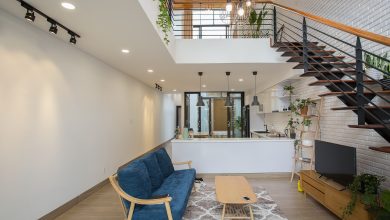
The first step in designing a beautiful website is to set your goals and priorities. Once you know this, craft a wireframe to visualize your website. Next, design with your target audience in mind. Lastly, make use of pictures to tell your story.
Set goals and priorities before you dive in
The first step in designing a website is to decide on your goals. You will need to prioritize your goals in order to avoid wasting your time and effort. The more specific your goals are, the better. You can set goals that are related to your work or to personal interests.
Another important step is to find out what your target audience likes and dislikes about websites that are similar to yours. While web design is subjective, it must also resonate with your target audience. This is especially important online, where audiences are fickle and highly competitive. As such, you should make research into your target audience’s psychographics and buying habits. Your aim is to understand your target audience so you can tailor your site’s features and functionality to suit their needs and desires.
Craft a wireframe to visualize your website
Crafting a wireframe can help you visualize the basic questions that you need to answer to design your website. While it is not the same as an actual design, it can help you identify the design decisions you need to make to optimize user experience and conversion rates. For example, too many links or too much copy can distract users and hinder conversions. Using a wireframe will help you identify any problems before you spend a lot of money on costly design iterations.
There are several ways to create a wireframe. Some designers choose to create a rough sketch on paper and then move to software for a more polished wireframe. Others prefer to stick with hand-drawn wireframes. The advantage of using different formats for a wireframe is that you can try out several different designs before you commit to a final design. Wireframing is usually the least time-consuming part of the design process, and allows you to experiment with many different ideas at once.
If you’re not a designer, you can sketch out a wireframe yourself using grid paper. This way, you can test out your ideas and tweak them without fear of making a mistake. Remember that a wireframe sketch isn’t permanent, so if you make a mistake, it won’t ruin your entire project.
The wireframe should have a clear user flow so that you can see how your visitors will move through your website. For example, an eCommerce website will have many pages, each of which plays a specific role in the user flow. Some pages will simply be landing pages, while others will be aimed at conveying information such as recent offers and popular items. A wireframe will not have an exact purpose, so it’s OK to drop some pages from your final design if you don’t think they’re going to be essential.
Design with your audience in mind
When designing a website, the first step is to think about your audience. Consider what their needs are and what types of people they are. Once you have an understanding of your audience, you can use that knowledge to select design elements. The goal is to attract their attention and convert them into customers.
Once you have a clear idea of your audience, you can start creating your website. Start by looking at similar websites in your niche and figuring out which features they share. You can then tweak the design if necessary to better fit the needs of your audience.
Another key component is content. While the aesthetics of your website are important, content is what users will remember about your business. Developing content that engages users is vital for the success of any website. If your site is visually attractive and well-written, users will stay on it.
A website’s target audience can make or break a business. Your audience is the one who will be telling others about your product or service. Your website should be an avenue for these people to express themselves. Creating a site for your target audience isn’t easy, but it’s vital to your success. By doing so, you’ll increase the chance of your site being remembered. If you are interested in web designing visit this link https://www.espwebzing.com/web-designs/
Use photos to tell your story
Using photos can be an effective way to tell a story. Images can add context and answer questions immediately. The eye is naturally drawn to faces, so images with people in them have great power. If you want to attract attention to your brand, choose photos that include people in them.


